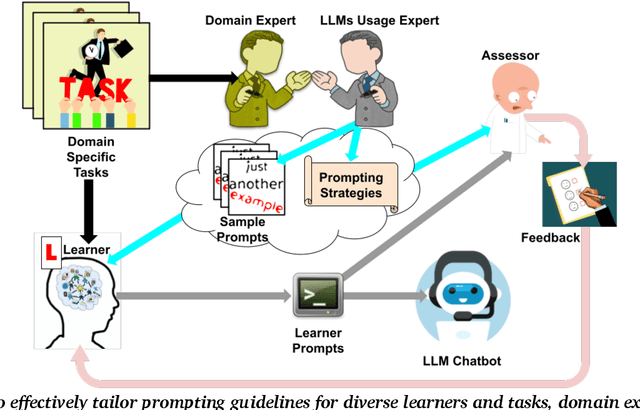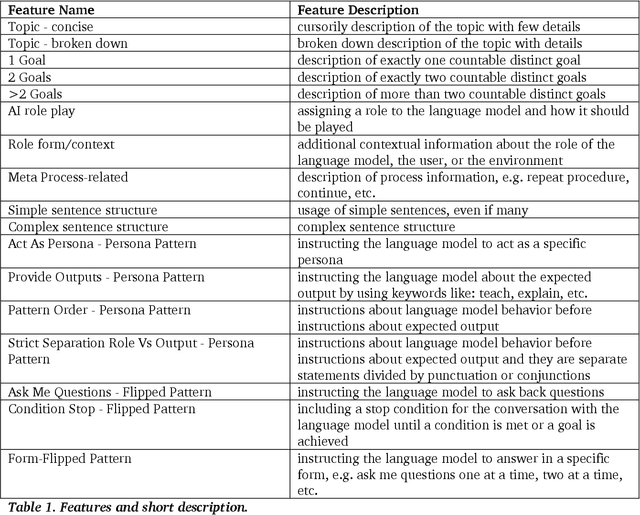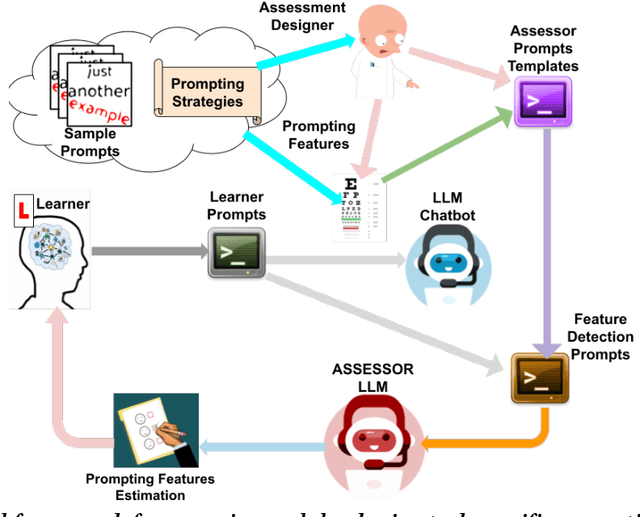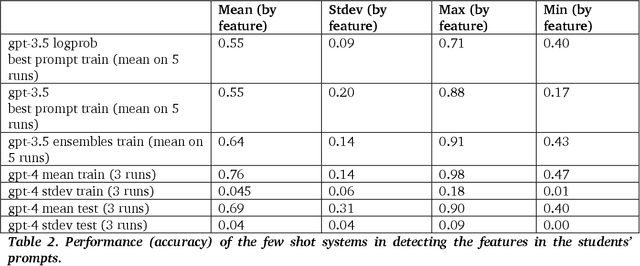Davide Taibi
SQuaD: The Software Quality Dataset
Nov 14, 2025Abstract:Software quality research increasingly relies on large-scale datasets that measure both the product and process aspects of software systems. However, existing resources often focus on limited dimensions, such as code smells, technical debt, or refactoring activity, thereby restricting comprehensive analyses across time and quality dimensions. To address this gap, we present the Software Quality Dataset (SQuaD), a multi-dimensional, time-aware collection of software quality metrics extracted from 450 mature open-source projects across diverse ecosystems, including Apache, Mozilla, FFmpeg, and the Linux kernel. By integrating nine state-of-the-art static analysis tools, i.e., SonarQube, CodeScene, PMD, Understand, CK, JaSoMe, RefactoringMiner, RefactoringMiner++, and PyRef, our dataset unifies over 700 unique metrics at method, class, file, and project levels. Covering a total of 63,586 analyzed project releases, SQuaD also provides version control and issue-tracking histories, software vulnerability data (CVE/CWE), and process metrics proven to enhance Just-In-Time (JIT) defect prediction. The SQuaD enables empirical research on maintainability, technical debt, software evolution, and quality assessment at unprecedented scale. We also outline emerging research directions, including automated dataset updates and cross-project quality modeling to support the continuous evolution of software analytics. The dataset is publicly available on ZENODO (DOI: 10.5281/zenodo.17566690).
Why am I seeing this? Towards recognizing social media recommender systems with missing recommendations
Apr 15, 2025Abstract:Social media plays a crucial role in shaping society, often amplifying polarization and spreading misinformation. These effects stem from complex dynamics involving user interactions, individual traits, and recommender algorithms driving content selection. Recommender systems, which significantly shape the content users see and decisions they make, offer an opportunity for intervention and regulation. However, assessing their impact is challenging due to algorithmic opacity and limited data availability. To effectively model user decision-making, it is crucial to recognize the recommender system adopted by the platform. This work introduces a method for Automatic Recommender Recognition using Graph Neural Networks (GNNs), based solely on network structure and observed behavior. To infer the hidden recommender, we first train a Recommender Neutral User model (RNU) using a GNN and an adapted hindsight academic network recommender, aiming to reduce reliance on the actual recommender in the data. We then generate several Recommender Hypothesis-specific Synthetic Datasets (RHSD) by combining the RNU with different known recommenders, producing ground truths for testing. Finally, we train Recommender Hypothesis-specific User models (RHU) under various hypotheses and compare each candidate with the original used to generate the RHSD. Our approach enables accurate detection of hidden recommenders and their influence on user behavior. Unlike audit-based methods, it captures system behavior directly, without ad hoc experiments that often fail to reflect real platforms. This study provides insights into how recommenders shape behavior, aiding efforts to reduce polarization and misinformation.
Understanding Learner-LLM Chatbot Interactions and the Impact of Prompting Guidelines
Apr 10, 2025Abstract:Large Language Models (LLMs) have transformed human-computer interaction by enabling natural language-based communication with AI-powered chatbots. These models are designed to be intuitive and user-friendly, allowing users to articulate requests with minimal effort. However, despite their accessibility, studies reveal that users often struggle with effective prompting, resulting in inefficient responses. Existing research has highlighted both the limitations of LLMs in interpreting vague or poorly structured prompts and the difficulties users face in crafting precise queries. This study investigates learner-AI interactions through an educational experiment in which participants receive structured guidance on effective prompting. We introduce and compare three types of prompting guidelines: a task-specific framework developed through a structured methodology and two baseline approaches. To assess user behavior and prompting efficacy, we analyze a dataset of 642 interactions from 107 users. Using Von NeuMidas, an extended pragmatic annotation schema for LLM interaction analysis, we categorize common prompting errors and identify recurring behavioral patterns. We then evaluate the impact of different guidelines by examining changes in user behavior, adherence to prompting strategies, and the overall quality of AI-generated responses. Our findings provide a deeper understanding of how users engage with LLMs and the role of structured prompting guidance in enhancing AI-assisted communication. By comparing different instructional frameworks, we offer insights into more effective approaches for improving user competency in AI interactions, with implications for AI literacy, chatbot usability, and the design of more responsive AI systems.
Generative AI for Software Architecture. Applications, Trends, Challenges, and Future Directions
Mar 17, 2025



Abstract:Context: Generative Artificial Intelligence (GenAI) is transforming much of software development, yet its application in software architecture is still in its infancy, and no prior study has systematically addressed the topic. Aim: We aim to systematically synthesize the use, rationale, contexts, usability, and future challenges of GenAI in software architecture. Method: We performed a multivocal literature review (MLR), analyzing peer-reviewed and gray literature, identifying current practices, models, adoption contexts, and reported challenges, extracting themes via open coding. Results: Our review identified significant adoption of GenAI for architectural decision support and architectural reconstruction. OpenAI GPT models are predominantly applied, and there is consistent use of techniques such as few-shot prompting and retrieved-augmented generation (RAG). GenAI has been applied mostly to initial stages of the Software Development Life Cycle (SDLC), such as Requirements-to-Architecture and Architecture-to-Code. Monolithic and microservice architectures were the dominant targets. However, rigorous testing of GenAI outputs was typically missing from the studies. Among the most frequent challenges are model precision, hallucinations, ethical aspects, privacy issues, lack of architecture-specific datasets, and the absence of sound evaluation frameworks. Conclusions: GenAI shows significant potential in software design, but several challenges remain on its path to greater adoption. Research efforts should target designing general evaluation methodologies, handling ethics and precision, increasing transparency and explainability, and promoting architecture-specific datasets and benchmarks to bridge the gap between theoretical possibilities and practical use.
Use Me Wisely: AI-Driven Assessment for LLM Prompting Skills Development
Mar 04, 2025



Abstract:The use of large language model (LLM)-powered chatbots, such as ChatGPT, has become popular across various domains, supporting a range of tasks and processes. However, due to the intrinsic complexity of LLMs, effective prompting is more challenging than it may seem. This highlights the need for innovative educational and support strategies that are both widely accessible and seamlessly integrated into task workflows. Yet, LLM prompting is highly task- and domain-dependent, limiting the effectiveness of generic approaches. In this study, we explore whether LLM-based methods can facilitate learning assessments by using ad-hoc guidelines and a minimal number of annotated prompt samples. Our framework transforms these guidelines into features that can be identified within learners' prompts. Using these feature descriptions and annotated examples, we create few-shot learning detectors. We then evaluate different configurations of these detectors, testing three state-of-the-art LLMs and ensembles. We run experiments with cross-validation on a sample of original prompts, as well as tests on prompts collected from task-naive learners. Our results show how LLMs perform on feature detection. Notably, GPT- 4 demonstrates strong performance on most features, while closely related models, such as GPT-3 and GPT-3.5 Turbo (Instruct), show inconsistent behaviors in feature classification. These differences highlight the need for further research into how design choices impact feature selection and prompt detection. Our findings contribute to the fields of generative AI literacy and computer-supported learning assessment, offering valuable insights for both researchers and practitioners.
On Large Language Models in Mission-Critical IT Governance: Are We Ready Yet?
Dec 16, 2024Abstract:Context. The security of critical infrastructure has been a fundamental concern since the advent of computers, and this concern has only intensified in today's cyber warfare landscape. Protecting mission-critical systems (MCSs), including essential assets like healthcare, telecommunications, and military coordination, is vital for national security. These systems require prompt and comprehensive governance to ensure their resilience, yet recent events have shown that meeting these demands is increasingly challenging. Aim. Building on prior research that demonstrated the potential of GAI, particularly Large Language Models (LLMs), in improving risk analysis tasks, we aim to explore practitioners' perspectives, specifically developers and security personnel, on using generative AI (GAI) in the governance of IT MCSs seeking to provide insights and recommendations for various stakeholders, including researchers, practitioners, and policymakers. Method. We designed a survey to collect practical experiences, concerns, and expectations of practitioners who develop and implement security solutions in the context of MCSs. Analyzing this data will help identify key trends, challenges, and opportunities for introducing GAIs in this niche domain. Conclusions and Future Works. Our findings highlight that the safe use of LLMs in MCS governance requires interdisciplinary collaboration. Researchers should focus on designing regulation-oriented models and focus on accountability; practitioners emphasize data protection and transparency, while policymakers must establish a unified AI framework with global benchmarks to ensure ethical and secure LLMs-based MCS governance.
Modeling Social Media Recommendation Impacts Using Academic Networks: A Graph Neural Network Approach
Oct 06, 2024Abstract:The widespread use of social media has highlighted potential negative impacts on society and individuals, largely driven by recommendation algorithms that shape user behavior and social dynamics. Understanding these algorithms is essential but challenging due to the complex, distributed nature of social media networks as well as limited access to real-world data. This study proposes to use academic social networks as a proxy for investigating recommendation systems in social media. By employing Graph Neural Networks (GNNs), we develop a model that separates the prediction of academic infosphere from behavior prediction, allowing us to simulate recommender-generated infospheres and assess the model's performance in predicting future co-authorships. Our approach aims to improve our understanding of recommendation systems' roles and social networks modeling. To support the reproducibility of our work we publicly make available our implementations: https://github.com/DimNeuroLab/academic_network_project
6GSoft: Software for Edge-to-Cloud Continuum
Jul 09, 2024Abstract:In the era of 6G, developing and managing software requires cutting-edge software engineering (SE) theories and practices tailored for such complexity across a vast number of connected edge devices. Our project aims to lead the development of sustainable methods and energy-efficient orchestration models specifically for edge environments, enhancing architectural support driven by AI for contemporary edge-to-cloud continuum computing. This initiative seeks to position Finland at the forefront of the 6G landscape, focusing on sophisticated edge orchestration and robust software architectures to optimize the performance and scalability of edge networks. Collaborating with leading Finnish universities and companies, the project emphasizes deep industry-academia collaboration and international expertise to address critical challenges in edge orchestration and software architecture, aiming to drive significant advancements in software productivity and market impact.
$Classi
Jun 10, 2024
Abstract:Quantum computing, albeit readily available as hardware or emulated on the cloud, is still far from being available in general regarding complex programming paradigms and learning curves. This vision paper introduces $Classi|Q\rangle$, a translation framework idea to bridge Classical and Quantum Computing by translating high-level programming languages, e.g., Python or C++, into a low-level language, e.g., Quantum Assembly. Our idea paper serves as a blueprint for ongoing efforts in quantum software engineering, offering a roadmap for further $Classi|Q\rangle$ development to meet the diverse needs of researchers and practitioners. $Classi|Q\rangle$ is designed to empower researchers and practitioners with no prior quantum experience to harness the potential of hybrid quantum computation. We also discuss future enhancements to $Classi|Q\rangle$, including support for additional quantum languages, improved optimization strategies, and integration with emerging quantum computing platforms.
Learning to Prompt in the Classroom to Understand AI Limits: A pilot study
Jul 04, 2023Abstract:Artificial intelligence's progress holds great promise in assisting society in addressing pressing societal issues. In particular Large Language Models (LLM) and the derived chatbots, like ChatGPT, have highly improved the natural language processing capabilities of AI systems allowing them to process an unprecedented amount of unstructured data. The consequent hype has also backfired, raising negative sentiment even after novel AI methods' surprising contributions. One of the causes, but also an important issue per se, is the rising and misleading feeling of being able to access and process any form of knowledge to solve problems in any domain with no effort or previous expertise in AI or problem domain, disregarding current LLMs limits, such as hallucinations and reasoning limits. Acknowledging AI fallibility is crucial to address the impact of dogmatic overconfidence in possibly erroneous suggestions generated by LLMs. At the same time, it can reduce fear and other negative attitudes toward AI. AI literacy interventions are necessary that allow the public to understand such LLM limits and learn how to use them in a more effective manner, i.e. learning to "prompt". With this aim, a pilot educational intervention was performed in a high school with 30 students. It involved (i) presenting high-level concepts about intelligence, AI, and LLM, (ii) an initial naive practice with ChatGPT in a non-trivial task, and finally (iii) applying currently-accepted prompting strategies. Encouraging preliminary results have been collected such as students reporting a) high appreciation of the activity, b) improved quality of the interaction with the LLM during the educational activity, c) decreased negative sentiments toward AI, d) increased understanding of limitations and specifically We aim to study factors that impact AI acceptance and to refine and repeat this activity in more controlled settings.
 Add to Chrome
Add to Chrome Add to Firefox
Add to Firefox Add to Edge
Add to Edge